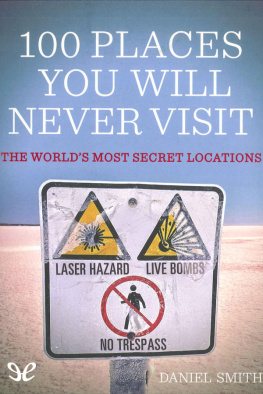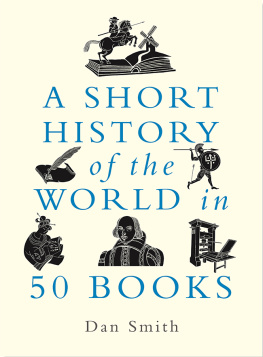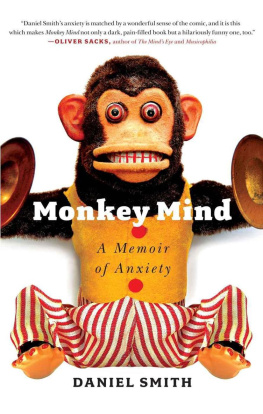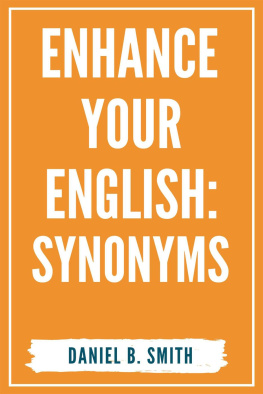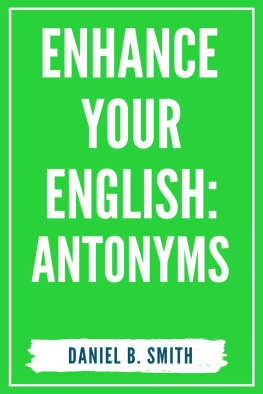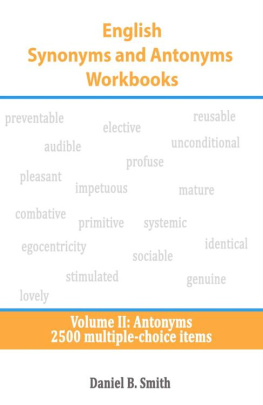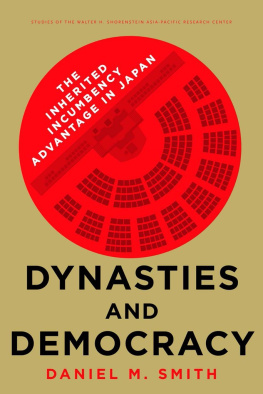Daniel Smith - 100 Places You Will Never Visit
Here you can read online Daniel Smith - 100 Places You Will Never Visit full text of the book (entire story) in english for free. Download pdf and epub, get meaning, cover and reviews about this ebook. year: 2014, publisher: ePubLibre, genre: Romance novel. Description of the work, (preface) as well as reviews are available. Best literature library LitArk.com created for fans of good reading and offers a wide selection of genres:
Romance novel
Science fiction
Adventure
Detective
Science
History
Home and family
Prose
Art
Politics
Computer
Non-fiction
Religion
Business
Children
Humor
Choose a favorite category and find really read worthwhile books. Enjoy immersion in the world of imagination, feel the emotions of the characters or learn something new for yourself, make an fascinating discovery.
- Book:100 Places You Will Never Visit
- Author:
- Publisher:ePubLibre
- Genre:
- Year:2014
- Rating:4 / 5
- Favourites:Add to favourites
- Your mark:
- 80
- 1
- 2
- 3
- 4
- 5
100 Places You Will Never Visit: summary, description and annotation
We offer to read an annotation, description, summary or preface (depends on what the author of the book "100 Places You Will Never Visit" wrote himself). If you haven't found the necessary information about the book — write in the comments, we will try to find it.
100 Places You Will Never Visit — read online for free the complete book (whole text) full work
Below is the text of the book, divided by pages. System saving the place of the last page read, allows you to conveniently read the book "100 Places You Will Never Visit" online for free, without having to search again every time where you left off. Put a bookmark, and you can go to the page where you finished reading at any time.
Font size:
Interval:
Bookmark:
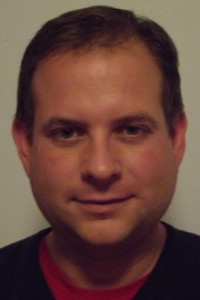
DANIEL SMITH. Daniel Smith is an author and researcher. His books include The Sherlock Holmes Companion, The Lucky Bugger's Casebook, and a history of the Second World War Dig For Victory campaign. He is also a long-time contributor to The Statesman's Yearbook, an annual geopolitical guide to the countries of the world. He lives in London.
Wreck of submarine K-129
LOCATION Beneath the Pacific Ocean
NEAREST POPULATION HUB Petropavlovsk, Russia
SECRECY OVERVIEW Location uncertain: a sunken submarine at the heart of a Cold War mystery.
The K-129 was a nuclear-equipped submarine that sailed as part of the Soviet Pacific Fleet. After sinking in unknown circumstances in 1968, it was located by US forces, who subsequently attempted to raise it in a covert black op. While some of the wreckage was retrieved, much remains in the seaexactly what the Americans found, and in what circumstances, remains a mystery to this day.
Launched in 1960, the K-129 was based at the Rybachiy Naval Base in Russias far eastern Kamchatka region. On February 24, 1968, the vessel and her 98 crew set out on a scheduled patrol and, after undertaking a deep-sea test dive, the captain reported that all was well. Nothing more was ever heard from the sub.
In March 1968, Soviet naval headquarters implemented a massive search and rescue effort across the North Pacific. They failed to find the submarine, but their efforts attracted the attention of American intelligence. By analyzing data from its underwater Sound Surveillance System, the US pinpointed the resting place of the K-129, almost 5,000 meters (16,500 ft) beneath the waters of the Pacific.
Confronted with the opportunity to get his hands on one of the USSRs nuclear fleet, President Nixon authorized a top secret salvage attempt known as Project Azorian. A bespoke vessel, the Hughes Glomar Explorer, was built especially for the job. The cover story was that the ship was to be used for mining manganese nodules from the seabed.
The salvage operation, carried out during July and August 1974, had mixed results. Some of the vessel was recovered, but a large section fell back to the seabed when technical equipment failed. The exact location of the wreck and details of the operation remain top secret, but it has been speculated that the US left the scene with recovered nuclear warheads, code books and operations manuals.
Many believe the wreck lies some 2,800 kilometers (1,500 nautical miles) northwest of the Hawaiian island of Oahu and 2,200 kilometers (1,200 nautical miles) southeast of Petropavlovsk. Why K-129 sank has never been discovered, but theories include an accidental onboard explosion or even a collision with a US vessel. The full truth may come with the declassification of government files in decades to come, but might equally rest with the dead under the sea.

1 MISSILE PLATFORM Designed in the late 1950s, the Soviet Golf II submarine was a diesel-electric vessel with a top speed of 31 km/h (17 knots) on the surface and 22 km/h (12 knots) submerged. It carried three nuclear-armed ballistic missiles, each with a relatively short range of around 150 km (95 miles).
2 SECRET SCAVENGER The Glomar Explorer was built by the US especially for the salvage operation. The vessels cover story held that it belonged to a company owned by billionaire industrialist Howard Hughes, and was intended for use in projects to extract minerals from the ocean floor.
The Great Pacific Garbage Patch
LOCATION North Pacific Ocean
NEAREST POPULATION HUB Honolulu, Hawaii, USA
SECRECY OVERVIEW Jurisdiction uncertain: the worlds biggest rubbish dump.
Twice the size of Texas, a mass of non-biodegradable plastic has gathered in the waters of the northern Pacific Ocean. Brought together by ocean currents, this vast body of waste originates from countries all around the world and poses a major long-term threat to the ecosystem. Yet no nation state or major international body has formulated a comprehensive plan for dealing with it.
The responsibility of no single nation, the Great Pacific Garbage Patch is a truly dirty secret that few outside the community of environmental activists are ready to acknowledge and act upon. The patch has formed from countless tons of rubbish deposited into the sea, 80 percent of it from mainland areas.
The Garbage Patchs location in the North Pacific is due to a gyre, an ocean current that is very calm at its center but swirls round in a circle, drawing in ever-increasing volumes of floating debris. Ecologists have been forecasting the existence of such a feature since at least the 1980s, but it was only in 1997 that Charles Moore and his crew confirmed the existence of the Great Pacific Garbage Patch while competing in a yachting race. Moore subsequently set up a campaigning body to bring attention to the problem.
Plastic does not degrade like natural materials such as paper or cotton: instead, it breaks down into smaller and smaller harmful compounds over hundreds of years. Tiny bits of plastic found floating in the oceans are sometimes referred to as mermaids tearssurely a far more romantic name than they deserve. While many sea birds and mammals are killed when they become trapped in plastic debris, even more dangerous are the toxins that the plastics introduce into the food system, which then progress perniciously from the smallest plankton to the largest whale.
Scientists estimate that the Garbage Patch contains three-quarters of a million fragments of plastic per square kilometer (0.4 sq miles). Plastics account for 90 percent of all the rubbish in the worlds oceans, and as much as 70 percent of it sinks, causing untold damage to life on the sea bed. Yet the Great Pacific Garbage Patch remains the floating landfill site that no government seems keen to discuss. It is a safe guess that if it were the Great Pacific Oil Reserve, there would be rather more of a clamor to establish sovereignty.

1 POISONED WATERS Our increasing use of plastics has helped extend humanitys destructive footprint from the lands on which we live to the deepest parts of the distant oceana heavy price to pay for the added convenience of product packaging and the like.
2 DIRTY SECRET The exact impact of the Garbage Patch on the Pacific Oceans ecosystem is not known, but new research is constantly increasing our understanding of its effects. What is beyond doubt, however, is that the Garbage Patch poses a real threat of an environmental catastrophe.
HAARP research station
LOCATION Gakona, Alaska, USA
NEAREST POPULATION HUB Anchorage, Alaska
SECRECY OVERVIEW Access restricted: an atmospheric research facility under the jurisdiction of the US Department of Defense.
The High-frequency Active Auroral Research Program (HAARP) describes itself as a premier facility for the study of ionospheric physics and radio science. Its stated aim is to further advance our knowledge of the physical and electrical properties of the Earths ionosphere which can affect our military and civilian communication and navigation systems.
HAARP is funded by the US Air Force and Navy, as well as to conduct research into the ionospherethe part of the atmosphere between 55 and 800 kilometers (35500 miles) above the Earths surface. In this region, electrically charged gases can absorb, distort and reflect radio waves, with significant implications for military and civilian communications, navigation, surveillance and detection systems.
Font size:
Interval:
Bookmark:
Similar books «100 Places You Will Never Visit»
Look at similar books to 100 Places You Will Never Visit. We have selected literature similar in name and meaning in the hope of providing readers with more options to find new, interesting, not yet read works.
Discussion, reviews of the book 100 Places You Will Never Visit and just readers' own opinions. Leave your comments, write what you think about the work, its meaning or the main characters. Specify what exactly you liked and what you didn't like, and why you think so.

